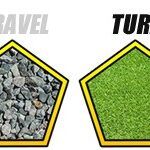The Caterpillar 3126 engine, a turbocharged 7.2L inline 6-cylinder diesel workhorse, was introduced in 1997 as Cat’s first electronic mid-range diesel engine. Succeeding the 3116, the 3126 initially faced criticism due to issues like cracked blocks and dropped valves, largely attributed to faulty castings from a French foundry. However, these problems primarily affected the 3116, and Caterpillar proactively addressed them with a recall. Despite lingering misconceptions, when properly maintained, the 3126 proves to be a highly reliable engine.
Caterpillar 3126 Engine Applications
The 3126 engine’s versatility made it a popular choice across various industries:
- Construction: Powering heavy equipment like excavators and loaders.
- Agriculture: Driving tractors and other agricultural machinery.
- Marine: Propelling boats and ships.
- Buses: Providing reliable transportation for passengers.
- Ambulances: Ensuring timely emergency medical services.
Common Caterpillar 3126 Engine Problems
While generally robust, the 3126 engine is susceptible to certain issues:
- Spun Crankshaft Bearings: Often caused by oil starvation or excessive wear.
- Cracked Cylinder Head(s): Resulting from overheating or extreme pressure.
- Scored Pistons and Liners: Due to poor lubrication or excessive heat.
- Over Fueling: Leading to excessive smoke and potential engine damage.
- Low Oil Pressure: Indicating a potential oil leak or pump failure.
- Excessive Blow By: Signifying worn piston rings or cylinder walls.
- Dropped Valves: A serious issue often requiring engine rebuild.
- Camshaft Failure: Resulting in performance loss and potential engine damage.
- Crankshaft Failure: A catastrophic failure often requiring engine replacement.
- Lifter/Roller Failure: Leading to valve train issues and reduced performance.
Caterpillar 3126 Engine Remanufacturing: A Cost-Effective Solution
When a 3126 engine experiences major failure, remanufacturing offers a viable alternative to replacement. This process involves a complete teardown, cleaning, inspection, and rebuilding of the engine to original equipment manufacturer (OEM) specifications.
The Remanufacturing Process
Reputable remanufacturers follow a rigorous process:
-
Thorough Cleaning: Removing all contaminants to prevent future failures.
-
Crankshaft Machining: Precision machining, polishing, and magnafluxing to ensure proper tolerances.
-
Cylinder Head Resurfacing: Guaranteeing a proper seal with the block and compatibility with modern gasket materials.
-
Cylinder Block Inspection: Using magnetic particle inspection to detect cracks, followed by boring, honing, and torque plate honing to minimize blow-by.
-
Camshaft Inspection and Machining: Ensuring correct lift and meeting OEM tolerances.
-
Connecting Rod Reconditioning: Cleaning, machining, and fitting new bushings to ensure even stress distribution.
-
New Parts Installation: Utilizing new pistons, rings, bearings, gaskets, seals, and liners, sourced from OEM or reputable aftermarket suppliers. This ensures optimal performance and reliability.
Conclusion
The Caterpillar 3126 engine, despite early challenges, has proven its worth in various applications. Understanding its specifications, potential problems, and remanufacturing options is crucial for owners and operators. By addressing issues proactively and considering remanufacturing as a cost-effective solution, the 3126 can continue to provide reliable service for years to come.

